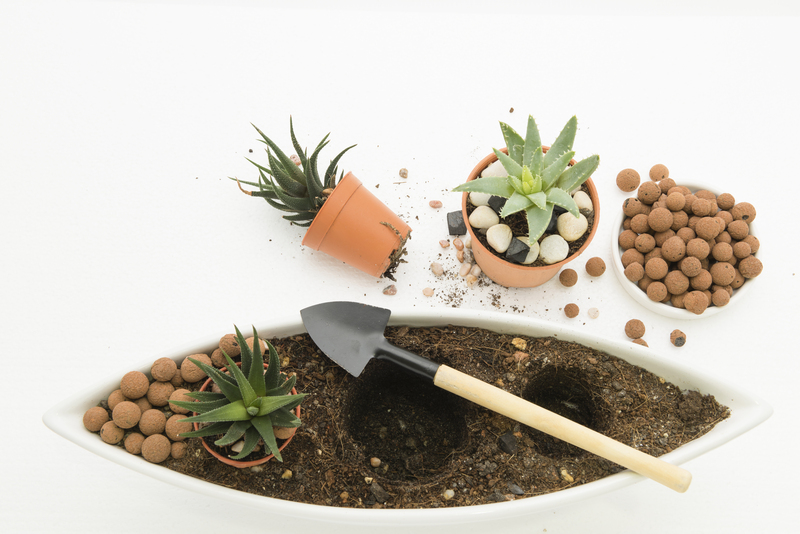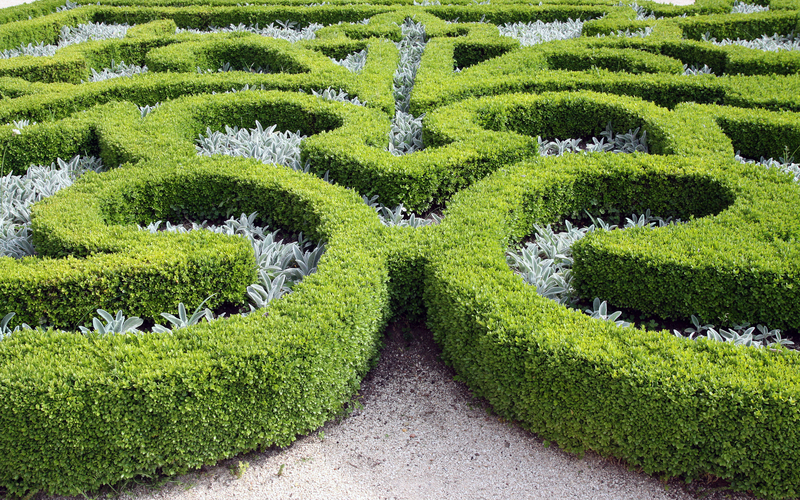Clever Ideas for Clearing Your Land of Old Tree Stumps
Is your backyard or property dotted with unsightly old tree stumps? Whether you've recently removed unwanted trees or inherited a landscape in need of a clean-up, dealing with remaining stumps can be a frustrating challenge. Old stumps aren't just eyesores -- they can attract pests, harbor disease, and create obstacles for landscaping projects. If you're seeking creative, effective, and eco-friendly solutions for clearing your land of old tree stumps, this comprehensive guide outlines clever methods to get the job done efficiently.
Why Remove Old Tree Stumps?
Before we dig into stump-clearing techniques, let's examine why those stumps should be removed. Some homeowners choose to leave stumps alone, but this can lead to:
- Pest infestations - Rotting stumps attract ants, termites, beetles, and fungi.
- Disease transmission - Old wood may harbor pathogens that can spread to healthy trees.
- Safety hazards - Stumps create tripping risks for children and pets.
- Obstacles to landscaping - Stumps take up valuable space and block plans for gardens or patios.
- Visual blight - A yard dotted with stumps looks neglected and unkempt.
With these risks in mind, removing tree stumps is often the best choice for maintaining your property's aesthetics and safety.

Popular Methods for Stump Removal
Not all stumps (or properties) are created equal. Factors like the stump's age, size, root structure, and your landscape's layout will determine which stump-clearing solution works best. Here, we'll cover a comprehensive range of clever ways to clear your land of old tree stumps - from hands-on manual techniques to innovative eco-friendly options, and even some creative upcycling ideas.
1. Classic Manual Removal
For small to medium stumps, manual removal is a tried-and-true method. It requires time and muscle, but virtually no special equipment. Here's how:
- Use a shovel to expose as many roots as possible around the stump.
- Cut larger roots with an ax, root saw, or loppers.
- Rock the stump back and forth to loosen it.
- Use leverage -- a sturdy pry bar can help dislodge stubborn roots and lift the stump free.
- Fill in the hole with soil and reseed with grass.
Tip: Water the area around the stump the day before to soften the soil and make digging easier.
2. Stump Grinding: Fast & Efficient
If the manual approach isn't practical -- especially for large or numerous stumps -- stump grinding is the professional's choice. Stump grinders are powerful machines that shred stumps into wood chips within minutes.
- You can rent a stump grinder from most equipment rental centers.
- Follow machine instructions carefully and wear protective gear.
- Grind the stump 6-12 inches below ground level for best results.
- Collect the wood chips for mulch or composting.
While stump grinding is more expensive than DIY manual removal, it's the fastest and most efficient way to clear your land of old stumps, especially for wide or deep-rooted varieties.
3. Chemical Stump Removal: A Low-Effort Alternative
For landowners needing a hands-off approach, chemical stump removal may be appealing. These products accelerate the natural decomposition process.
- Drill several holes into the top and sides of the stump.
- Fill holes with a commercial stump remover (usually potassium nitrate or a similar compound).
- Water the product as directed and cover the stump with a tarp to keep moisture in.
- Wait several weeks to months for the stump to become soft and rotted.
- Break up the decayed stump with an ax, shovel, or by burning (where safe and legal).
*Always follow local regulations and product instructions. Keep children and pets away during the decomposition process.
4. Natural Decomposition: An Eco-Friendly Method
If you're not in a hurry, you can harness the power of nature to help clear tree stumps from your property. Speed up the natural decay process with these steps:
- Drill holes into the stump to allow for water and fungal access.
- Pack the holes with high-nitrogen materials (like fertilizer, compost, or manure).
- Keep the stump moist and cover it with mulch or soil.
- Add mushrooms or decay fungi (e.g., oyster mushrooms) to speed up the breakdown.
This method can take a year or more, but it avoids chemicals, is environmentally friendly, and even enriches the soil for future planting.
5. Controlled Burning
In areas where permitted, burning old stumps is a classic land-clearing technique. Here's how you can do it safely:
- Drill holes into the stump and fill with kerosene (never use gasoline).
- Let the kerosene soak in for several days.
- Stack scrap wood around the stump and ignite carefully.
- Keep a water hose and extinguisher nearby at all times for safety.
- Do not leave the burn site unattended until the fire is completely out and the ashes are cooled.
Check with your local fire authority before using this method, as many communities have restrictions on open burning.
6. Excavation with Heavy Machinery
For clearing large properties of many stumps -- such as on old farmland or commercial lots -- using machinery like a backhoe or skid steer with a stump bucket attachment is highly effective.
- Machines can quickly rip out stumps of all sizes and stack them for disposal.
- This method is cost-effective for bulk removal, though it leaves a rougher finish that may require follow-up grading and seeding.
- Always operate heavy equipment safely and consider hiring a professional for large jobs.
7. Creative Upcycling: Turning Stumps Into Features
If removing a stump is too challenging or you're feeling creative, why not give unwanted stumps a second life in your landscape? Here are some clever ideas for repurposing old stumps:
- Garden Planters - Hollow out the stump and fill it with soil for a rustic flower planter or succulent bed.
- Yard Art - Carve or paint the stump to add whimsical sculptures or fairy gardens to your outdoor space.
- Outdoor Furniture - Use large, stable stumps as natural stools, tables, or even rustic bases for benches.
- Bird Baths or Feeders - Scoop out the top and line with a shallow basin for wildlife attractions.
This approach saves time, reduces waste, and creates a unique focal point in your garden!
Tips for Success: Make Stump Clearing Easier
- Choose the right method - Consider stump size, proximity to structures, soil conditions, and your budget before choosing a removal technique.
- Stay safe - Always wear gloves, boots, eye protection, and use tools properly.
- Ask for help - Large jobs are easier (and safer) with two or more people, or consider professional services.
- Restore the soil - Fill holes with topsoil and reseed or plant immediately after stump removal to prevent erosion and weeds.
- Compost chips and debris - Wood chips make great mulch for other landscaping projects.
Environmental Considerations for Stump Clearing
When pondering how to clear your land of old stumps, it's important to think about the impact on your environment. Here are some guidelines for responsible removal:
- Avoid chemical runoff - Use chemical removers sparingly and avoid application near water sources.
- Recycle wood waste - Whenever possible, chip or compost stump wood rather than sending it to the landfill.
- Replant trees or shrubs - Clearing large areas? Offset the removal by planting new greenery elsewhere on your property.
- Protect soil structure - Avoid compacting soil with heavy machinery, which can hinder future growth.
Frequently Asked Questions About Tree Stump Removal
How much does professional stump removal cost?
The price ranges from $100-$400 per stump, depending on size, location, and the chosen method (grinding, excavation, etc.).
Are there natural methods for stump removal?
Yes! Encouraging natural decay with compost, mushrooms, and moisture is a chemical-free, earth-friendly alternative, but it takes the longest.
Is burning stumps always allowed?
No. Local regulations often restrict open fires due to safety and air quality. Always check city or county ordinances first.
Can old stumps regrow?
Some species, like willow or poplar, can sprout new growth from the stump or roots. Thorough removal or grinding prevents regrowth.
What should I do with the leftover wood chips?
Use them as mulch in flowerbeds or garden paths, compost them, or offer them to neighbors for free. They add valuable nutrients to your soil.

Transform Your Space: Say Goodbye to Old Tree Stumps
From hands-on digging to high-powered grinders, clearing your land of old tree stumps is easy with the right plan. Whether you're striving for a manicured lawn, preparing ground for new construction, or simply tidying your outdoor environment, these clever ideas for old stump removal will help you reclaim and beautify your property.
Remember, each technique has its strengths and ideal use cases. For best results, match your chosen method to your land's unique needs, and always prioritize safety and environmental impact. And if the job feels too big, don't hesitate to consult a stump removal pro!
By following these strategies, you'll soon enjoy a smoother, healthier, and more visually appealing landscape -- free from old, unwanted stumps.
Ready to Reclaim Your Yard?
Choose the best approach for your situation and get started today. With a little effort and creativity, clearing your land of stumps can be a rewarding and transformative project!